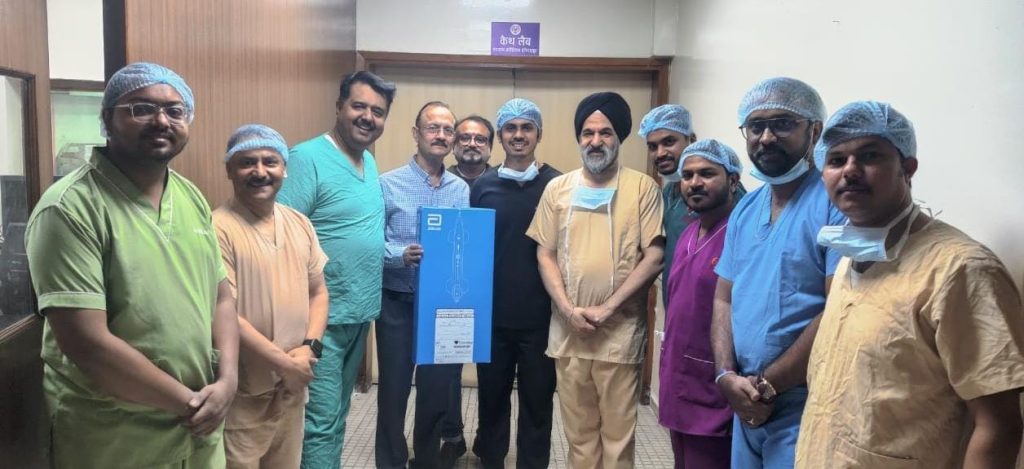ACI doctors successfully remove calcium deposits in coronary arteries using a diamond-coated drill device.

Raipur, December 17
In a significant medical advancement, the Advanced Cardiac Institute (ACI) at Dr. Bhimrao Ambedkar Memorial Hospital, affiliated with Pandit Jawaharlal Nehru Memorial Medical College, Raipur, has successfully removed calcium deposits from the arteries of two heart patients using the orbital atherectomy procedure. This innovative procedure involves using a 1.25 mm diamond-coated drill device to grind the calcium into fine particles, effectively clearing the arteries and improving blood flow.
Orbital atherectomy is a procedure used to open up calcified blockages (plaque) before angioplasty. It involves inserting a thin catheter with a diamond-coated burr into the artery, which rotates on its axis and grinds away the calcified surface, creating a smooth surface for blood flow. This reduces the risk of heart attacks.
Health Minister Shri Shyam Bihari Jaiswal congratulated the team for the successful treatment of the patients and stated that under the leadership of Chief Minister Shri Vishnudev Sai, healthcare facilities in the state are expanding rapidly. The experienced and dedicated team of cardiologists at ACI has introduced a new treatment facility for heart patients through the coronary orbital atherectomy procedure. By using this technique in a government hospital, ACI has achieved a significant milestone. The innovations made by the ACI team in the treatment of heart disease are giving new hope to patients.
Providing detailed information about the cases, Cardiologist Dr. Smit Srivastava explained that a 77-year-old co-morbid elderly patient from Raipur had low heart pumping capacity along with BP and sugar problems. Angiography reports revealed calcium deposits in the left main and all three arteries of the heart. Due to this, it was not possible to perform angioplasty using the conventional angioplasty method. In such a situation, angioplasty was performed by removing the calcium using the orbital atherectomy procedure. Similarly, a 68-year-old patient from Bhilai had calcium deposits in his arteries. He had undergone angiography at an outside hospital and was advised bypass surgery. The patient came to ACI with this suggestion and angioplasty was successfully performed using the orbital atherectomy procedure due to a large amount of calcium deposit in the left main artery of ACI. The patient recovered and went home on the same day.
What is the orbital atherectomy procedure?
Assistant Professor of Cardiology Dr. Kunal Ostwal explained that in the orbital atherectomy procedure, a thin catheter is inserted into the artery. This catheter has a rotating diamond-coated burr that rotates 360 degrees on a special circular axis, scraping away the calcium deposited inside the veins. By breaking or grinding the calcium deposits, this procedure creates a smooth surface for blood flow, facilitating angioplasty and stent placement, and reducing the risk of blockages. This method is used in arteries where angioplasty and stenting cannot be performed in the normal way. It breaks the calcium into such small pieces that it is removed through the capillaries of the artery.
